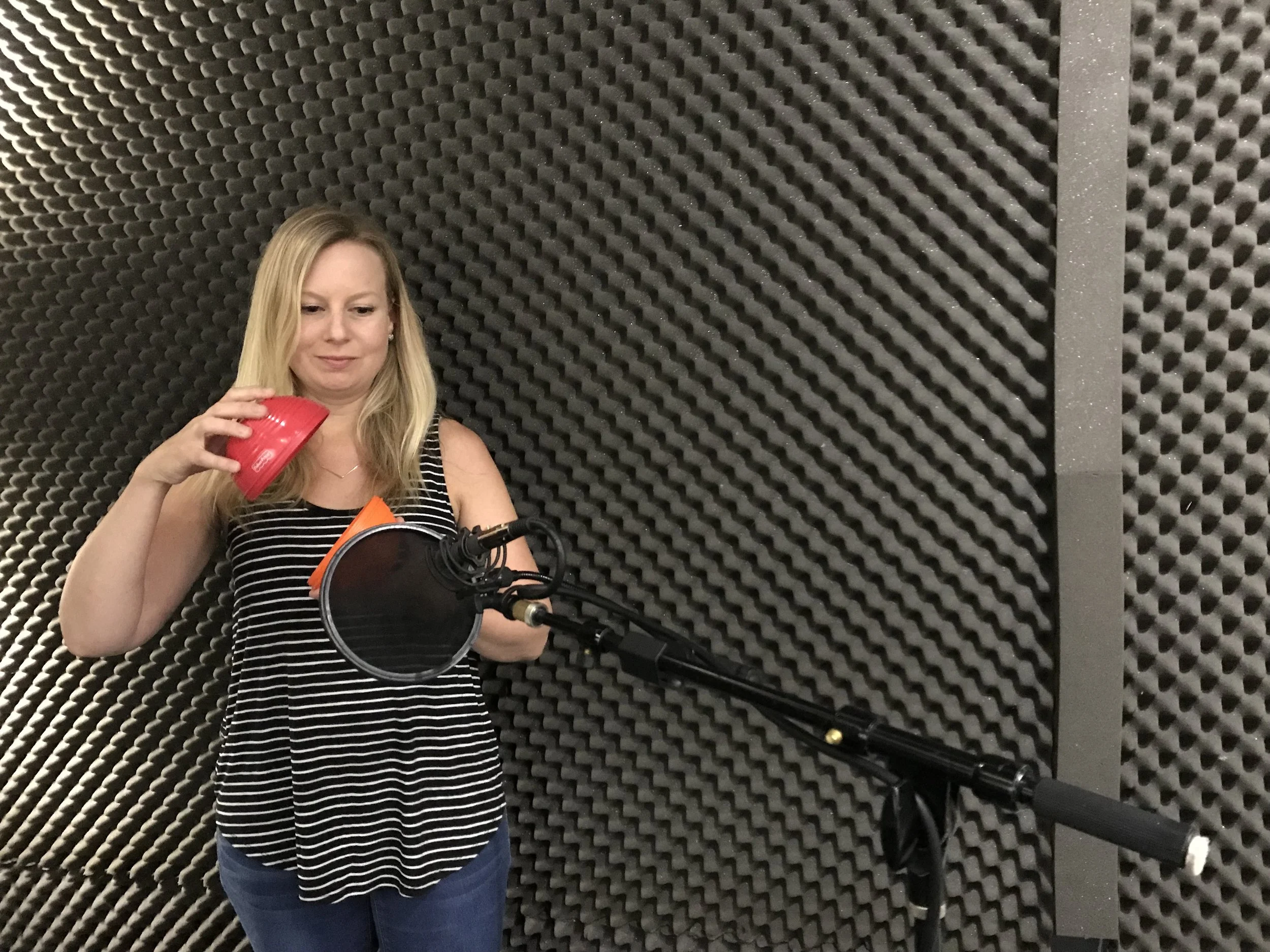Over at our other company, Boom Box Library, we recently released “Magic Chimes,” a library of mark tree and bell tree recordings for sound design and music applications. The library has been a big success thus far, clearly filling a need in the sound library community. Creating it from scratch was very fun, so I thought it would be interesting to share the process with you.
Viewing entries in
How To
From Back to the Future to Edge of Tomorrow, the concept and interpretation of “interdimensional time jumping” has been a key feature in sci-fi films and TV-shows. Such out-of-this-world story telling requires the support of creative and exciting sound design to immerse the viewer into the stretching of space. Read on to learn how Jessey builds a unique time jump sequence.
Before audio post-production was even a possibility, composers would incorporate the emotion and the action of what they saw on the screen into their musical scores. They played the role of sound FX editor and composer, with a technique referred to as “Mickey-Mousing” where the composer would exaggerate a character’s movements with specific orchestration and musical motives. Now that sound FX editors have taken this role in post-production, Mickey-Mousing is less common, so it’s key for sound FX editors to make cuts that work with the music in the overall mix for a film or tv-show. Here are some considerations and tips that our team shared on their approach to editing with music in mind.
Collaborating is a big part of our industry. Even in sound editorial, where we are usually by ourselves in a room when we work, we collaborate in projects with mixers, supervisors, Foley artists, and also share editorial with other sound designers/editors.
We are so excited to showcase our latest work in the new Netflix animated TV show, Centaurworld! In honor of the shows release, we asked one of our sound editors to dive into some of the magical sound elements she created for the show. Get ready to learn about how Katie designed the “magical artifact” seen in the trailer and first episode of Centaurworld!
I remember the first time I was on a mix stage, the mixer broke out this software tool that made it look like we were about to decode The Matrix. There were grainy shades of orange in crazy designs. What was I looking at?!?
That tool was the Spectral Repair module from Izotope RX and it’s a modern marvel.
As a mixer, I see all kinds of issues cropping up that originated in sound editorial. And with my background in sound editorial, I’ve surely committed every one of them myself at some point. Here’s a list of some common problems we see on the mix stage. Avoiding these problems will not only make your work easier to handle and more professionally presented, it will hopefully save you a snarky email or comment from a mixer!
The art of foley is an amazing magic trick that can really bring a production to life. If your project has the budget for custom foley, I would highly recommend taking advantage of skilled professionals to help bring this element of your soundtrack to life. That said, not everyone has the money and access to a professional foley team. Never fear! You can be your own foley team with incredible results. All from the comfort of your home, at little to no cost.
We’ve all been there. Upon starting a new project you’re told “picture is locked” which means there will be no further edits resulting in timing changes. Projects that stick to this promise are a dream. However, the reality of creative work is that it’s ever-evolving; and that includes picture editorial. Timing changes are inevitable, but they don’t have to be dreaded. With the right process, conforming to new picture can be relatively painless.
At the very beginning of 2020, Women’s Audio Mission reached out to me to ask if Boom Box Post would be interested in contributing to their upcoming Los Angeles popup by giving a workshop on sound design for television and film. We decided to put together a small event in May for 15-30 people which would introduce the audience to sound design and include some hands-on interactive components.
And then… COVID hit and it seemed that this plan to collaborate would need to be put off indefinitely due to travel, health, and safety concerns.
But, WAM being the incredible resource that it is for so many people in our industry, they quickly pivoted and created WAM Everywhere Live Classes, a series of free virtual workshops “to keep our community connected, supported, and learning during this time of social distancing and beyond.”
There are many different ways to be a great leader and a lot of different philosophies that can get you there. But this post isn’t to cover the theoretical side of leadership. This is a nuts and bolts how-to with specific tips regarding software, meetings, organization, and communication specifically pertaining to being a supervising sound editor. Obviously, there are many approaches on this front as well, but here’s what we do here at Boom Box Post with much success.
One of the most challenging sequences a sound editor can face is a car chase. Vehicles are tough. Even the most experienced designer can hit a wall when trying to make them work. This is by no means a complete guide, however, this primer should prove helpful for those looking to dip their toes into the wild world of vehicle sound editorial.
We have sound editors coming in to test for us on a regular basis. The single most common difference between an editor who has worked largely alone versus one that has worked within a sound team is the lack of knowledge when it comes to the basics. There are three concepts I consider essential that I ask edit testers about right off the bat: Perspective Cutting, Stair Stepping, Color Coding. I can learn a lot about their familiarity with these concepts based on their response. Even a slight hesitance to answer is a dead giveaway; you’ve only worked alone and without much direction.
All great editors start out as good editors. The hope is that you evolve as time passes, into an exceptional talent. I have seen it time and again here at Boom Box, often in very short order. An editor with lots of skill and professionalism decides to push for more. These great editors form our core team; the kind of editors you want to keep around. So what’s the secret? Well I’m happy to tell you that going from good sound editor to great sound editor is not that complicated.
Earlier this year, the team from The Loud House approached us with a brand new short designed as a 360° video for YouTube. Never having worked in this format, I did some searching and was surprised at how little information had been published on sound for spatialized video. After working it out for myself, I thought I’d share the details with our readers as a jumping off point should a project like this come across your desk.
You may recall that I’ve written about creating signature sounds in the past. So, why write another post on the same topic? First of all, creating signature sounds is a skill that is absolutely essential to to setting yourself up as a high-quality professional sound designer. Second, that post covered a practical approach to designing signature sounds such as working on one sound at a time and designing in context. Here, I’d like to walk you through my actual creative process on a particular project.
This is not the sexiest blog post you will read this month. In fact, it’s probably the least sexy topic we’ll write about all year here at Boom Box Post. That said, it’s such an important one for anyone considering themselves a professional sound editor. A cluttered file structure is the equivalent of a messy home. Sure you can make do sorting through a mess, finding what you need after some intense searching. but why put yourself through it? Go to the container store, buy a pack of labels and some bins and get your stuff off the floor (I’m still on the messy house metaphor). So with that in mind, let me be your personal Peter Walsh (he is a professional organizer - I had to google it) as I help you to get your digital life in order.
We open on wide shot of a forest. A river runs in the distance. Not far from the river, emerging from the trees is a bloodied man in a torn business suit, limping and desperate for water. Cut to an over the shoulder shot of him staring at the river. Cut again and the camera is right on the water as he leans in for a drink. The focus (for our purposes) isn’t the man or his torn and blood soaked suit (I just added that for some flair). From a sound editorial standpoint, the complicated element here is the river. It’s far off in the distance, now it’s close to us, now it’s full frame in an extreme close up. As a viewer, the camera is our proxy here. Wherever the camera sits, so do we. And so, as the perspective of the camera changes so does our perception.
The entertainment industry can be tough. There are many cliche's, such as "It's all about who you know" or "It's all about right place right time." Neither of which are entirely untrue. However, I am a firm believer that anyone with some raw talent and a whole lot of drive can build themselves a career in post production sound - or any entertainment job for that matter.
If I'm making it sound easy, my apologies. It's absolutely a ton of work. Let me repeat that: getting a job in a highly specialized, creative industry where you are in competition with literally thousands of applicants will always be a ton of work. So why do it?
After buying our first home last year, my husband and I have been working hard at building our own home studio. In the past, every time we moved to a new apartment, we would always customize a home studio with our own DIY sound panels (see my blog post about that here). But since we plan to stay here forever, we have gone all out to make this studio space our own. And part of this customization has been soldering our own cables.





















